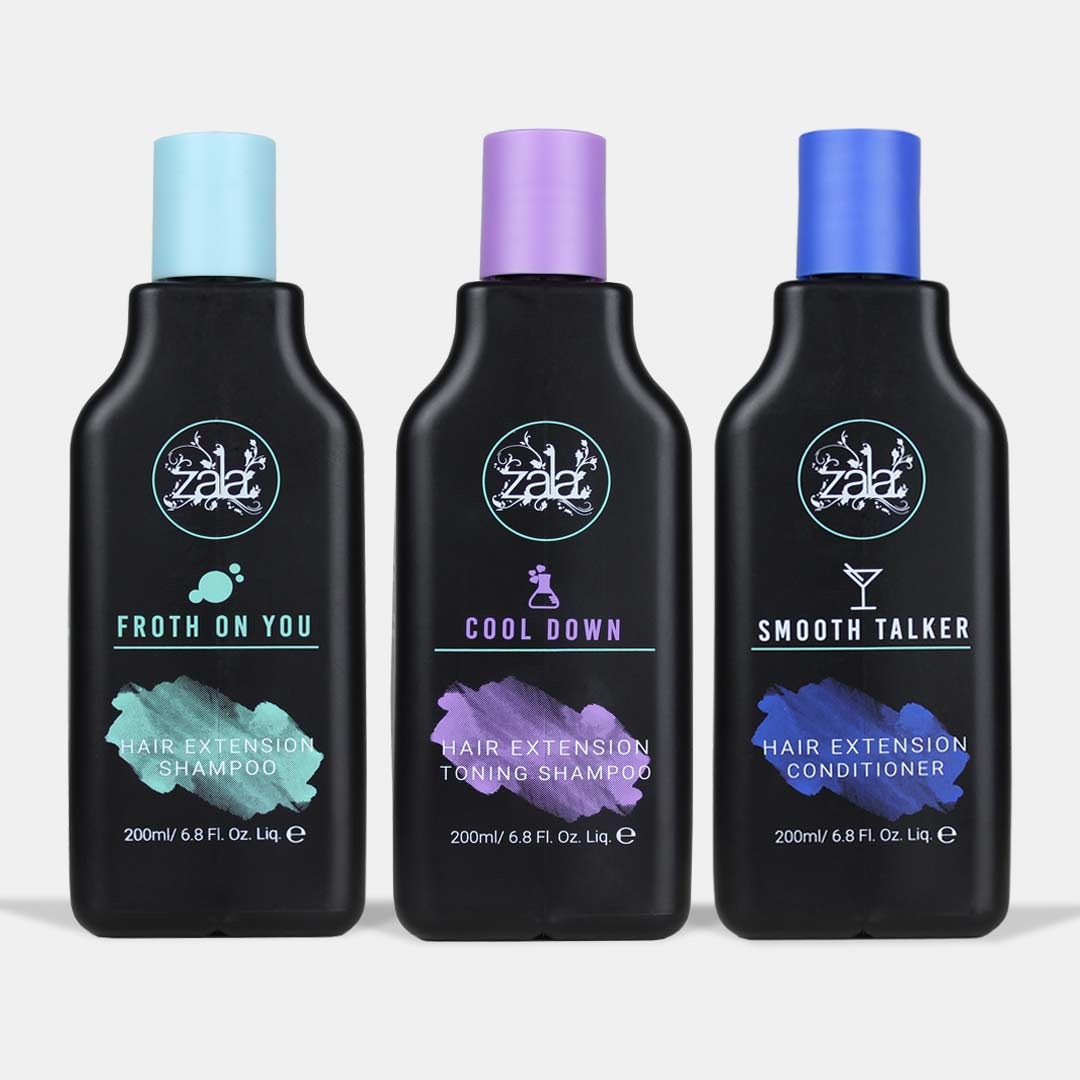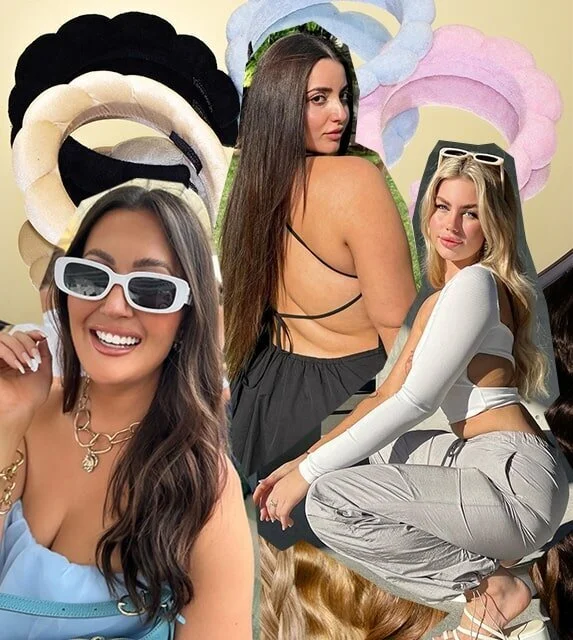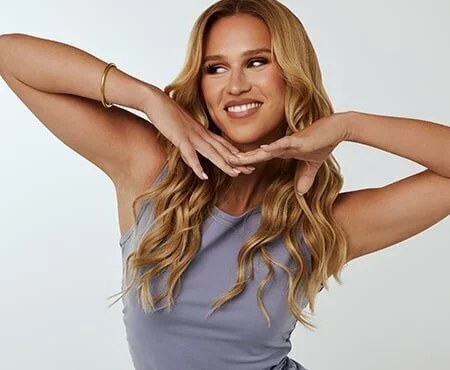6 Common Hair Myths, Debunked
Anyone else find it really difficult to get genuine hair advice? Does this product work, or is this influencer being paid to say this? Is this a genuine product or a fake ad? Or even worse, when you try a recommended “home remedy” and leaves your hair in an oily mess!! UGH!
There’s a lot of myths surrounding hair care. Some of these are even things we grew up hearing, but in reality, when you follow these deeply ingrained steps, you might be actually doing more harm than good to your hair!
So we thought it was time to debunk these myths for good. By doing so, you can achieve a better haircare routine that actually works, and save a whole bunch of wasted time too.
There’s a lot of myths surrounding hair care. When you follow these deeply ingrained steps, you might be actually doing more harm than good to your hair.
This is why it's high time to debunk these myths for good. By doing so, you can achieve a better haircare routine that actually works.
Brushing your hair 100 times a day leads to shinier hair.
PLEASE tell me I’m not the only one whose mum said this when I was young!
Bad news, if your mum also advised you that brushing your hair 100 times before going to bed will make your hair beautiful in the morning, nothing could be further from the truth. If you have fine, thinning hair, doing this may even lead to shedding.
Most of our moms advised us that brushing your hair 100 times before going to bed will make your hair beautiful in the morning, but nothing could be further from the truth. If you have fine, thinning hair, doing this may even lead to shedding.
Brushing your hair twice a day should be enough to distribute the natural oils evenly throughout the scalp. Use a natural bristle brush, and make sure not to brush when hair is wet. This is the stage when your hair is at its weakest and is more vulnerable to breakage.
Using the same shampoo loses its effectiveness.
No, you don’t have to change your shampoo every few weeks to keep it “effectiveness”... Most people think it’s the shampoo they are using that is causing their lackluster hair. If your shampoo produced great results before, but is not having the same effects now, it’s probably due to other factors. It could be the changing seasons, environmental conditions, your hormones, or maybe you’re not using the right shampoo for your hair type in the first place.
Most people think it’s the shampoo they are using that is causing their lackluster hair. If your shampoo produced great results before, but is not having the same effects now, it’s probably due to other factors. It could be the changing seasons, environmental conditions, your hormones, or maybe you’re not using the right shampoo for your hair type in the first place.
This is why it’s important that you give your shampoo enough time to work. If you like to switch out products every now and then, or frequently test out new stuff, this habit could prevent you from seeing real results and could even lead to product buildup.
Skipping conditioners is good for fine, thin hair.
Some experts recommend avoiding conditioners because they think these products would only weigh down the hair. This is like swearing off dating because your last relationship was terrible (we’ve been there, but we always end up coming around). Perhaps you just haven’t met Mr Right… Mr Right conditioner that is!
Conditioning is an important part of a haircare routine that should not be skipped. There are plenty of conditioners with lightweight formulas that are beneficial to hair, whether it’s thin or not.
Some experts recommend avoiding conditioners because they think these products would only weigh down the hair. However, conditioning is an important part of a haircare routine that should not be skipped. There are plenty of conditioners with lightweight formulas that are beneficial to hair, whether it’s thin or not.
First, it’s important to find a conditioner for your hair type. If you have greasy hair, look for a clarifying conditioner that will remove product buildup. If you have thinning hair, look for a volumizing conditioner that will give your hair more volume. Second, it’s also important that you apply both shampoo and conditioner the right way. Your shampoo should be applied directly on the roots, while your conditioner should be massaged on the mid-shaft to the ends.
Pulling out grey hair will make more of them grow.
Forcefully removing a hair strand will only damage the hair follicle. Also, only one hair can grow from one follicle, so the reasoning that multiple hairs will show up in place of one hair simply does not hold true.
You should embrace your greying hair and let it be. But if it’s really bothering you, you can have a quick trim or a root dye job to conceal them. Or better yet, you can use hair extensions to camouflage your greys & make your hair look more youthful!
You should embrace your greying hair and let it be. But if it’s really bothering you, you can have a quick trim or a root dye job to conceal them. Or better yet, you can use hair extensions to camouflage your greys.
Sleeping with your hair down helps it grow.
Going to bed with your hair all loosened up seems like a good idea at first glance. However, the constant rolling around in bed can cause the hair to tangle, and those tangles can also lead to breakage.
Tying your hair in a loose bun before bed actually makes sense, especially if you’re a restless sleeper. Just make sure that the fit isn't too tight and doesn't pull your scalp. This way, you’ll wake up with naturally wavy locks that do not need further styling. You can also try a loose braid if your strands are long enough.
Fixing split ends is possible.
Split ends are caused by many things like heat styling, coloring, excessive brushing, and drying the hair too roughly. Since the hair cuticle is no longer intact, the strands become weak and brittle, and will eventually lead to breakage. Once the strand has split, there's nothing that can be done to bring it back to its original condition.
Don’t be fooled by products promising to fix the split ends in your hair. These leave-in conditioners, treatment sprays, and serums all help to make the appearance of split ends less noticeable, but they don’t actually make the condition go away.
Instead, regular trims can help, as well as continued care and maintenance to keep your damaged hair as healthy as possible. Choose sulfate-free shampoos that contain no harsh ingredients, and limit heat styling and chemical straightening. If you still choose to heat style your hair, always apply a heat-protective spray before using your flat iron or curling wand.





